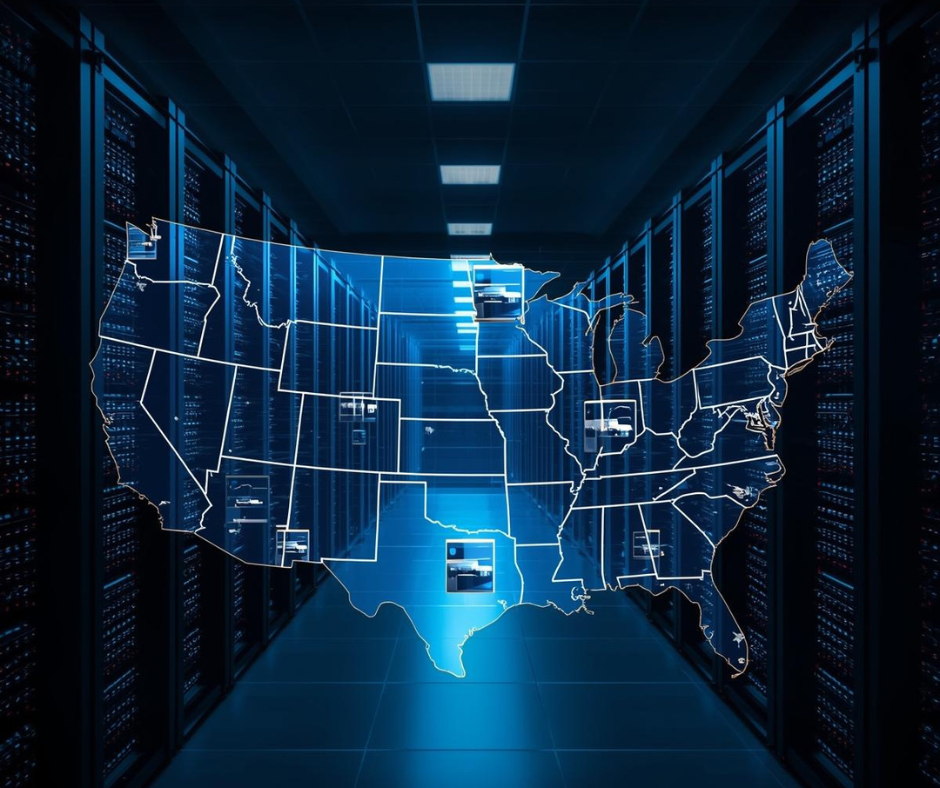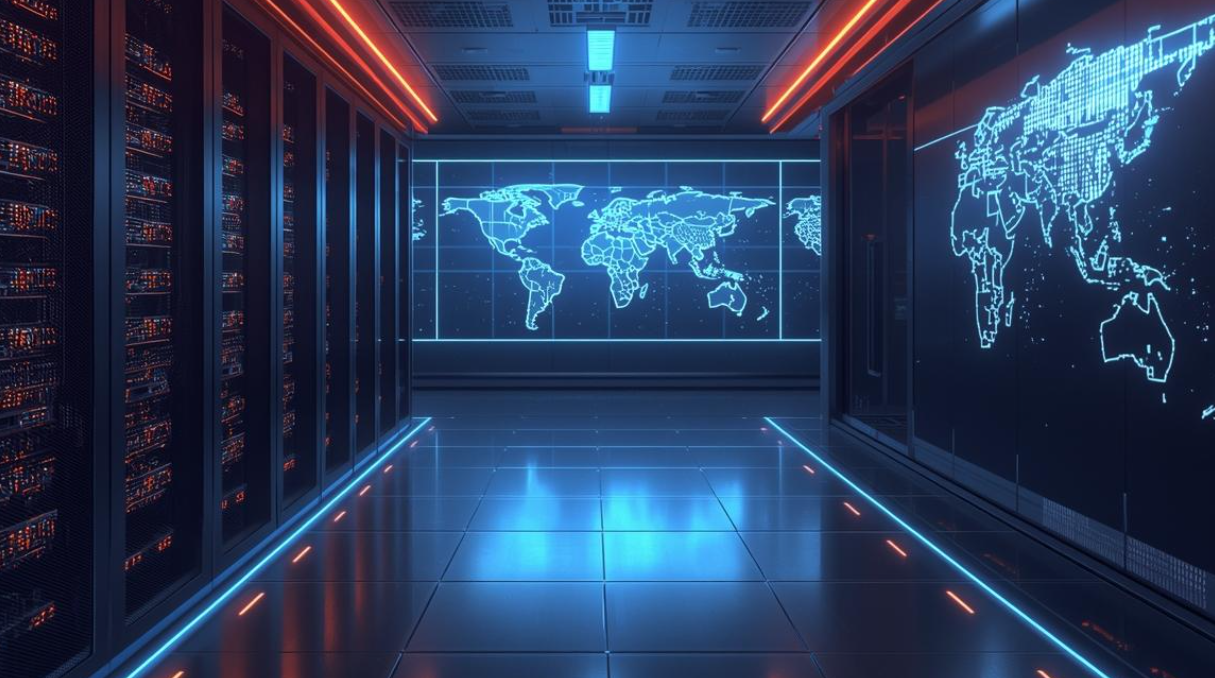
800 VDC Architectures Will
Why AI Data Centers Are Moving to 800 VDC Power Architectures How
Learn More →

Every swipe, stream, and search you make depends on something unseen yet powerful: data centers. These huge buildings are more than simply brick and steel; they represent the beating heart of the digital age. If you’ve ever wondered why the US oversees this worldwide network, the answer lies in its size, innovative ideas, and forward-thinking approach. Stay with us, and you’ll learn why U.S. data centers not only keep the internet running but also define the future of business, technology, and everyday life.
There are more than 5000 active facilities currently in the United States, making it a digital ecosystem unrivaled anywhere in the world. Virginia, Arizona, and Texas are just named on a map; they are the global hub of connectivity. A vast fiber optic network capability, extensive land area, and a reliable power grid create a perfect environment for scaling growth, supporting everything from cloud computing and AI to edge services.
The digital boom is fueled by big tech giants like Amazon Web Services, Microsoft Azure, Google Cloud, and Meta. Their multi-billion-dollar campuses not only push the envelope on AI and content delivery but also spark growth across the entire industry. From cable manufacturers to UPS service providers to energy suppliers, everyone is part of this huge wave of expansion.
The data centers consume energy on a massive scale, but the US operators have come up with ways to make it sustainable. Renewable energy contracts, liquid cooling systems, and high-efficiency power management systems with reduced environmental impacts make it easier to drive innovation. Texas and Arizona are pioneers in solar integration; on the other hand, Virginia and Illinois explore clean grid solutions and water-efficient cooling. Sustainability goes beyond trends; it defines America’s role at the forefront of digital innovation.
The United States offers strong cybersecurity regulations and geopolitical stability, making it a secure and dependable location for data infrastructure. Businesses ranging from healthcare to financial services can depend on uninterrupted service because of its high redundancy in power and fiber networks and time-zone coverage. In a world where technology is king, dependability is invaluable.
|
Rank |
State | Why it leads |
|
1 |
Virginia |
Data Center Alley, fiber connectivity, tax incentives, and the world’s largest market. |
|
2 |
Texas |
Abundant land, deregulated power, and massive energy capacity: Dallas–Fort Worth & Austin are key hubs. |
|
3 |
Arizona |
Low risk, strong solar adaptation, and strategic West Coast access. |
|
4 |
Georgia |
Atlanta’s connectivity and business-friendly climate attract hyperscale and colocation growth. |
| 5 | Illinois |
Central location, skilled workforce, and tax exemptions for enterprise expansion. |

The US data center sector drives billions in economic activities and supports thousands of jobs for highly skilled labor. The facility also relies on high-performance network infrastructure, including advanced cabling, UPS systems, and constant operational monitoring. Beyond these infrastructures, data centers also create demands for IT services and cybersecurity, cloud solutions, and AI-driven innovations, providing opportunities to be the backbone of tomorrow’s economy. By fostering advancements in sustainable practices, smart energy, and next-gen digital tools, they serve as engines of technological progress and economic development.
Growth brings more challenges, including rising demand for energy, water conservation, limited land, and a shift towards edge computing. Challenges associated with growth include the need for more energy, the need to conserve water, the scarcity of land, and the trend toward edge computing. Smarter modular designs, more environmentally friendly cooling systems, and smaller, distributed data centers nearer to end users are examples of how these difficulties drive innovation. To maximize sustainability and efficiency, businesses are investigating AI-driven energy management, sophisticated cooling water recycling, and adaptable site layout. By addressing these issues, the United States continues to establish international standards, demonstrating that creativity can flourish in the face of adversity and establishing American data centers as role models for the rest of the world.
America isn’t just home to the world’s largest data center; it’s building the foundation of the future’s digital economy. Its unmatched scale, innovation, and forward-looking policies ensure that AI, 5G, and edge computing will thrive here first.
5G is still growing worldwide, bringing faster connections and almost no delay, while 6G is coming next, promising an even more connected future. U.S. data centers are preparing for this next wave, making the country a launchpad for the technologies of tomorrow.
For businesses in cabling, UPS service, or power systems, this isn’t just industry news; it’s a call to engage, innovate, and grow alongside the digital revolution.
As U.S. data centers continue to expand, and technology is reshaping the digital landscape, reliable power supply and its maintenance have never been more critical. Gruber Power Service plays a key role in this transformation, providing high-quality batteries, UPS systems, network cables, and other essential equipment to keep the operation running smoothly and efficiently.
From ensuring uninterrupted power to supporting your high-speed network connectivity, we deliver solutions that empower data centers, businesses, and technology partners to stay in the digital era.
Contact Us today at 800.658.5883 or 602.863.2655 or email support@gruber.com
Why AI Data Centers Are Moving to 800 VDC Power Architectures How
Learn More →Choosing a Mission-Critical Power Service Provider in 2025 Updated and adapted for
Learn More →UPS Fans When people think about uninterruptible power supplies (UPS systems), they
Learn More →